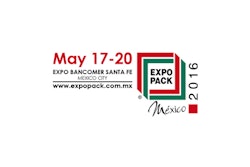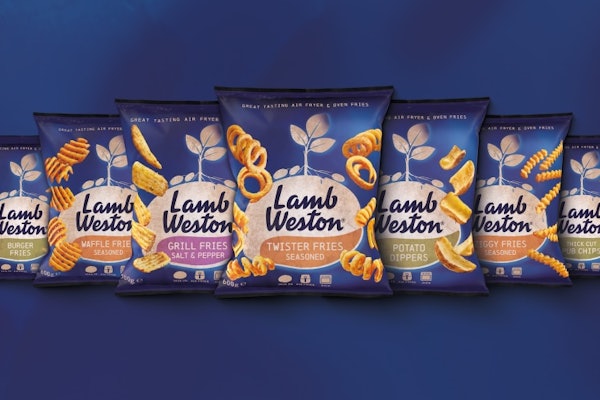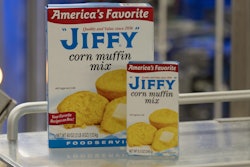Preppers (individuals or groups who are actively preparing for emergencies or disruptions in social or political order) prepare for catastrophes, whether natural or man-made, by stockpiling necessities. Of the products marketed to preppers, none more dependent on packaging than is food. Depending on the catastrophe, the disruptive effects can be long-term; therefore, long-term storage is a necessity that’s second only to the food itself.
Freeze-drying is favored for long-term storage foods. Water, necessary for the bacterial and enzymatic activities that cause spoilage, is removed. A corollary benefit is that the removal of water substantially reduces weight and volume, making the food more convenient to carry and store. Adding to those benefits, freeze-drying retains the food’s structure, to the extent that, when rehydrated, the food looks, tastes, and nourishes like before.
Freeze-drying is achieved by sublimation, the process in which a solid turns to a gas, without undergoing an intermittent liquid phase. In freeze-drying, food gets frozen inside a chamber; a vacuum is drawn, greatly reducing atmospheric pressure; low heat is introduced; the ice sublimes to water vapor, because the low atmospheric pressure does not allow the ice to liquefy; and the vapor is pumped out of the chamber, condensing to ice onto freezing coils.
Freeze-drying is a meticulous process. Heat must be controlled to prevent food degradation, and vapor removal must be controlled to prevent rehydration. Freeze-drying also is a slow process, sometimes transpiring across days. The product of all those resources and time needs to be protected, and that’s the job of packaging. Flexible packaging is the logical choice, and whatever its structure, it needs to have the requisite barrier properties, against moisture, of course, but also against oxygen (helped by first removing residual oxygen by nitrogen flushing).
Freeze-dried foods (properly packaged) have longer storage lives than foods processed by retorting, dehydration, or freezing. No combination of food and packaging technologies yields indefinite storage; so how should long-term storage be defined? Given some of the more catastrophic scenarios envisioned by preppers, the answer is, in years. Companies compete on that variable, some claiming that their packaged freeze-dried foods have a storage life of 25 years. Those companies don’t disclose whether the claim is based on extended or accelerated testing; therefore, a skeptic might have grounds for seasoning that claim with the proverbial grain of salt.
Preppers are committed to surviving and want to do so without unnecessary sacrifice; consequently, they don’t only want food that’s edible but food that’s also tasty. In response, the industry uses packaging graphics to communicate the gustatory qualities of long-term storage food. The packaging has to effectively communicate on a small screen, too, since a major portion of sales is made on-line through company websites. Other outlets, ranging from specialty retail stores to trade shows, allow preppers to handle the products before buying.
Scientists warn that climate change will continue to usher in weather extremes and to expect more frequent floods, hurricanes, tornadoes, tsunamis, heat-waves, droughts, blizzards, etc. From that, it can’t be generalized that preppers believe in climate change, although some undoubtedly do. What can be generalized, however, is that preppers believe that natural catastrophes are not only possible but probable. Preppers stay stockpiled, not like people who descend upon stores in the wake of a weather forecast, hoping not to find shelves picked bare.
But it is concern over man-made catastrophes that most distinguishes preppers from non-preppers. The envisioned scenarios are diverse but have in common the breakdown of the social order and the rule of law, leaving individuals responsible for their own survival. Such disruptions likely would be of considerable duration, hence the need for truly long-term storage foods.
It’s tempting to regard long-term storage foods as a fringe niche with narrow growth potential, but that can be a rash conclusion. Is there a kook factor assignable to preppers? Probably yes if we’re talking about the ones who are preparing for a zombie apocalypse. But that doesn’t overturn the fact that the ranks of preppers are diverse as to income, age, gender, ethnicity, and geography, in addition to philosophy and politics. As marketers might say, “Where there are people, there’s potential.”
Hazard insurance and catastrophic insurance are not considered radical policies purchased only by the doomsday-minded. By analogy, marketers of long-term storage foods regard their products as insurance, providing peace-of-mind; but those same marketers are careful not to overemphasize the negative.
Illustrating that point is a commercial run by a major brand in the category. In a well-appointed kitchen, a mom extols the brand’s easy preparation and gourmet varieties, as her children are shown enthusiastically eating the products. The commercial ends in the living room, mom hugging children and proclaiming them as her most valuable assets that must be protected. It’s more Americana than Armageddon, and the packaging graphics are supportive, free of catastrophic depictions.
The growth of long-term storage foods just might repeat the example set by health foods. There was a time in the not distant past when health foods were mainly retailed in, well, health-food stores. Increased consumer demand for such products did not go unnoticed by traditional grocery stores; and today, health-food sections are commonplace. A similar mainstreaming is possible for long-term storage foods, especially given the consolidation driving the grocery industry. One consequence of consolidation is larger stores, with shelf-space and display areas that need to be occupied by new, high-margin sections.
Likely, there are brand-owners of traditional foods who are tracking the long-term storage foods industry, assessing the feasibility of entry or acquisition. Those who join the industry could leverage their expertise in food formulation and packaging, in addition to their established channels with grocers.
Preppers or not, the strongest human instinct is self-survival. Packaging contributes to it by being central to the mass production, mass marketing, and mass distribution of goods, so vital to the quality-of-life that marks modern society. It should come as no surprise, then, that packaging is vital to retaining vestiges of that quality-of-life when catastrophe strikes.
__________________________________________________________________________
Sterling Anthony, CPP, is a consultant, specializing in packaging, marketing, logistics, and human factors. His contact information is: 100 Renaissance Center-43176, Detroit, MI 48243; 313-531-1875; [email protected]; www.pkgconsultant.com

























